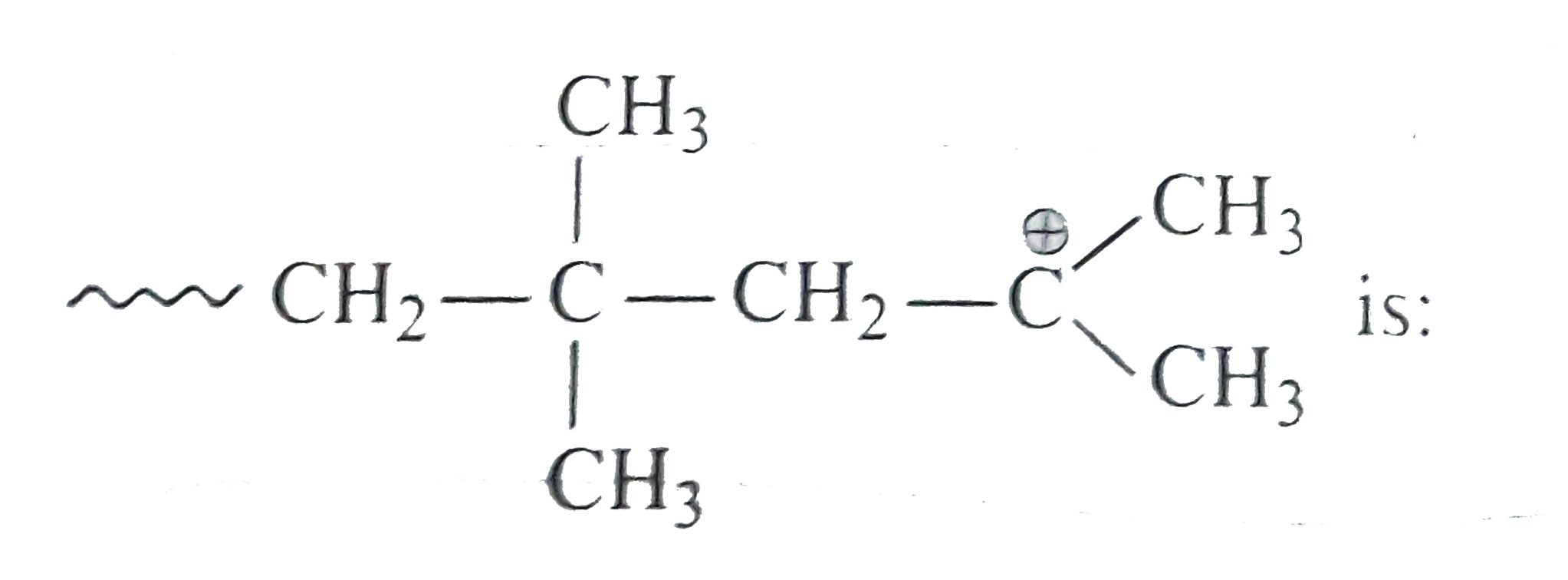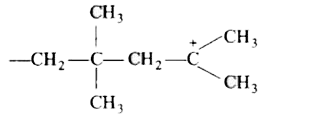Which of these is not a monomer for a high-molecular mass silicone polymer?
(a) MeSiCl3
(b) Me2SiCl2
(c) Me3SiCl
(d) PhSiCl3
The correct Answer is:C
To solve the question of which compound is not a monomer for a high-molecular mass silicone polymer, we will analyze each option provided.
1. Understanding the Question:
We need to identify which of the given compounds cannot act as a monomer for high-molecular mass silicone polymers. The compounds are:
- A) MeSiCl3
- B) Me2SiCl2
- C) Me3SiCl
- D) PhSiCl3
2. Analyzing Option A: MeSiCl3:
- MeSiCl3 undergoes hydrolysis, where the chlorine atoms are replaced by hydroxyl (OH) groups.
- The hydrolysis of MeSiCl3 results in MeSi(OH)3.
- This compound can further undergo condensation to form a branched silicone polymer.
- Conclusion: MeSiCl3 can be a monomer.
3. Analyzing Option B: Me2SiCl2:
- Me2SiCl2 also undergoes hydrolysis, replacing the chlorine atoms with hydroxyl groups.
- The hydrolysis results in Me2Si(OH)2.
- This compound can undergo condensation to form a silicone polymer.
- Conclusion: Me2SiCl2 can be a monomer.
4. Analyzing Option C: Me3SiCl:
- Me3SiCl undergoes hydrolysis, leading to Me3Si(OH).
- However, since there is only one hydroxyl group, it can only form a dimer when condensation occurs.
- This means it cannot form a high-molecular mass silicone polymer.
- Conclusion: Me3SiCl cannot be a monomer.
5. Analyzing Option D: PhSiCl3:
- PhSiCl3 undergoes hydrolysis to form PhSi(OH)3.
- Similar to MeSiCl3, it can undergo condensation to form a branched silicone polymer.
- Conclusion: PhSiCl3 can be a monomer.
6. Final Answer:
Based on the analysis, the compound that is not a monomer for a high-molecular mass silicone polymer is Option C: Me3SiCl.
We need to identify which of the given compounds cannot act as a monomer for high-molecular mass silicone polymers. The compounds are:
- A) MeSiCl3
- B) Me2SiCl2
- C) Me3SiCl
- D) PhSiCl3
- MeSiCl3 undergoes hydrolysis, where the chlorine atoms are replaced by hydroxyl (OH) groups.
- The hydrolysis of MeSiCl3 results in MeSi(OH)3.
- This compound can further undergo condensation to form a branched silicone polymer.
- Conclusion: MeSiCl3 can be a monomer.
- Me2SiCl2 also undergoes hydrolysis, replacing the chlorine atoms with hydroxyl groups.
- The hydrolysis results in Me2Si(OH)2.
- This compound can undergo condensation to form a silicone polymer.
- Conclusion: Me2SiCl2 can be a monomer.
- Me3SiCl undergoes hydrolysis, leading to Me3Si(OH).
- However, since there is only one hydroxyl group, it can only form a dimer when condensation occurs.
- This means it cannot form a high-molecular mass silicone polymer.
- Conclusion: Me3SiCl cannot be a monomer.
- PhSiCl3 undergoes hydrolysis to form PhSi(OH)3.
- Similar to MeSiCl3, it can undergo condensation to form a branched silicone polymer.
- Conclusion: PhSiCl3 can be a monomer.
Based on the analysis, the compound that is not a monomer for a high-molecular mass silicone polymer is Option C: Me3SiCl.
Similar Questions
Knowledge Check
In a polymer sample, 30% of molecules have a molecular mass of 20,000, 40% have 30,000 and the rest 60,000. What is the weight average molecular mass of the polymer?
A40300B306000C43333D50400
Which of the following monomers form biodegradable polymers?
View SolutionThe monomer for Teflon polymer is
View SolutionWhat is monomer for Orion polymer
View SolutionWhich one of the following molecules can serve as a monomer for an addition polymer?
View SolutionIn a polymer sample, 30% of molecules have a molecualr mass of 20,000,40% have 30,000 and the rest 60,000. What is the weight average molecular mass of the polymer?
View SolutionWhich of the following is an organo silicon polymer?
View SolutionWhat is the polydispersity index of polymer if the mass average molecular mass & number average molecular mass of a polymer are respectively 40,000 and 30,000 ?
View Solution


